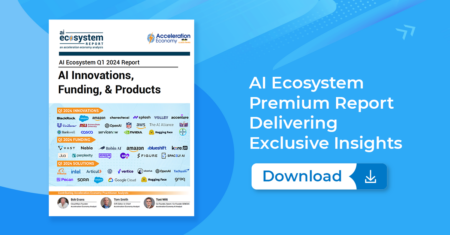Endpoint security has always been a cybersecurity staple. Malware lands on an endpoint device, moves laterally, data is exfiltrated, and incident response ensues. That sequence hasn’t changed even as technology has evolved and the complexity for security teams has increased alongside it.
Enter machine learning (ML), which has contributed to significant advancements in natural language processing and image classification along with cybersecurity. This analysis will explore ML’s impact on endpoint security as well as on parts of the tech environment that endpoints interface with.
Impact of Machine Learning on Endpoint Security
ML has the potential to change the game on how data is managed and cybersecurity tools are built. Most notably, the introduction of ML in cybersecurity tools has focused on the evolution of traditional, signature-based antivirus tooling to endpoint detection and response (EDR) tools. Machine learning has started to move into network detection and response (NDR) and extended detection and response (XDR), where the endpoint meets the network.
Let’s break down some of ML’s key benefits in endpoint security.
Enhanced Threat Detection
It may be helpful to expand on threat detection and endpoints. Malware needs a place to run to do harm. That place is often an endpoint device operating within an organization’s IT environment: a laptop, server, or virtual machine. The execution of malware or some other subsequent pattern of malicious activity on a device is a threat in this context. Threat detection then, is the process of identifying these clusters of activity and alerting the appropriate team to take action.
Machine learning algorithms, with their ability to learn and adjust from vast amounts of data, have been instrumental in scaling threat detection. Most notably, by helping identify malware or malicious behavior patterns that differ from established baselines captured in a signature. We’re seeing intriguing work done through EDR, NDR, and user behavioral analytics (UBA). This intersection of normally distinct fields is especially exciting as it potentially reduces the complexity of portfolio management for cybersecurity teams.
We’re also seeing this convergence happen in firms including Crowdstrike and Trellix, with tremendous market penetration to back up the trend. More and more firms are seeing improved performance by using ML-enhanced malware and malicious activity detection over legacy anti-virus software.
Improved Accuracy and Reduced False Positives
One of the significant advantages of machine learning in endpoint security is its ability to reduce false positives over time and at scale. We see this play out notably in the context of a security operations center (SOC) processing alerts and attempting to rapidly classify, contextualize, and act on them. With enhancement through ML, some of these alerts are resolved at the edge or agent level, within the tools themselves. Here, ML makes a SOC team better equipped to scale as they can learn what constitutes normal behavior and what doesn’t, while applying decisions quickly and consistently.
Proactive Security Measures
Machine learning’s predictive capabilities have also started to enable a more proactive approach to endpoint security and risk-based asset classification. A team that can begin to identify as risky certain devices or, by extension, users or services associated with those devices, can proactively allocate resources to protect the environment. These capabilities are beginning to emerge in asset management systems that are ingesting and normalizing endpoint data.
Where This Is Going
As we progress, machine learning is poised to play an increasingly important role in endpoint security. Really, in security across the board. Our field is rapidly embracing a data-driven approach to our work, from compliance to operations. We can anticipate the development of more sophisticated algorithms capable of identifying and mitigating threats with unprecedented speed and accuracy. We can also anticipate the continued rise in data platforms geared towards unifying security-related data. Lastly, the trend towards engineering skills across the cybersecurity field will likely benefit cybersecurity teams looking to build or deploy machine learning-led capabilities.
However, as with any technological advancement, potential challenges lie ahead. These include the need for large volumes of data for training ML models and the risk of adversarial attacks designed to deceive these models.
While platforms exist to handle data at scale, the balance of structured versus unstructured data that we receive and the source that we get it from might heavily influence how challenging this becomes. Threat modeling will continue to be an important tool for teams in looking at the flow of data, the process by which they build, and the tools they select.

Which companies are the most important vendors in cybersecurity? Check out
the Acceleration Economy Cybersecurity
Top 10 Shortlist.
Conclusion
The transformation of endpoint security through machine learning is just the tip of the iceberg in terms of benefits to the cybersecurity field. Already it’s powering better threat detection, speed and scale; contributing to a reduction in false positives; and providing new opportunities for teams to be proactive.
Organizations looking to embrace machine learning or build their own capabilities should be prepared to fully embrace data platforms to power that work. While fantastic tools exist today to scale data collection, storage, and processing, teams should be intentional and conduct proper threat modeling of the data they bring in to build machine learning capabilities.
Want more tech insights for the top execs? Visit the Leadership channel:










